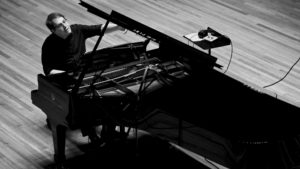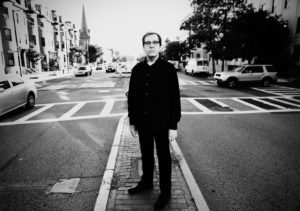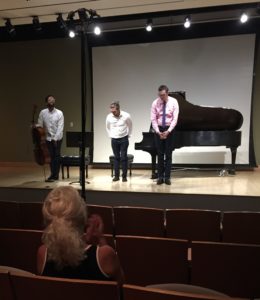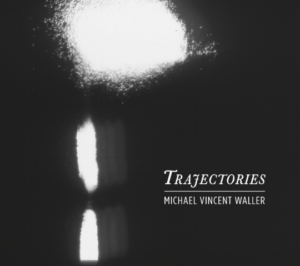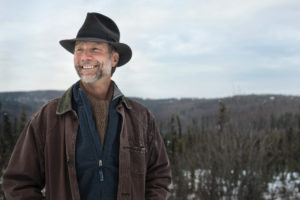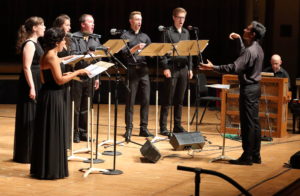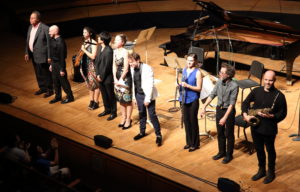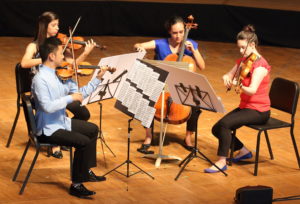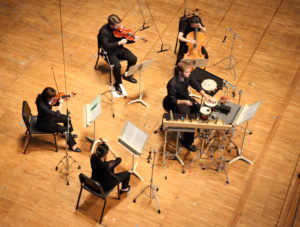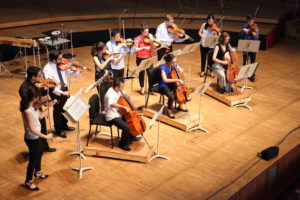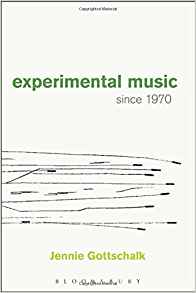The Prom presented on August 9 by the BBC National Orchestra of Wales, conducted by Ryan Wigglesworth, featured the first performance of Brian Elias’s Cello Concerto, which was a BBC commission. It was written for and is dedicated to Natalie Clein, who had to withdraw from the concert due to illness. The soloist in her stead was Leonard Elschenbroich, who despite coming late to the party, gave no indication of any kind of lack of preparation. The Cello Concerto is an imposing piece in four continuous movements, lasting twenty five minutes. A grandly rhetorical first movement, is followed by a scampering scherzo in a rotating variation form modeled after that of the poetic form of the sestina, a still and intense slow movement, and a final movement which eventually disappears quietly and somewhat inconclusively into a reminiscence of the very beginning material of the piece in a much higher register. The whole work operates at a quite high level of intensity while incorporating many different moods, speeds, and textures. The orchestration is masterly, and deals completely successfully with the great challenge of writing a piece for ‘cello and orchestra: making sure that the soloist doesn’t get covered up by the orchestra. The soloist in this piece can always be heard, playing just about continuously in many different registers and at many different speeds of figuration. The intensity of the work, along with and despite its considerable variety is what lingers most in the this listener’s mind. The performance by both Mr. Elschenbroich, playing the very difficult solo part, and the orchestra was just about flawless.
The concert began with Britten’s Ballad of Heroes for chorus, in this case the BBC National Chorus of Wales, and tenor soloist Toby Spence. It is an early work, written to honor the British members of the International Brigade who fought in the Spanish Civil War, setting poems of W. H. Auden and Randall Swingler which give somewhat mixed messages. It may be those mixed messages that, despite its apparent technical flawlessness, make it in the end not completely successful or satisfying. The concert also included an arrangement/orchestration by Elgar of a Purcell anthem, Jehova, quam multi sunt hostes, and Elgar’s Enigma Variations, in which the orchestra gave full evidence of their complete technical as well as their wonderful expressive abilities.
In continuing a tradition of doing some Proms at locations other than the Albert Hall, the concert in the afternoon of August 12, by the BBC Singers and members of the Nash Ensemble, conducted by David Hill, was presented in Southwark Cathedral. There has been a cathedral building on the site for centuries, although the present building, I’m told by an art historian friend of mine, is mostly Victorian. In any case it is a beautiful building, giving the sense of isolation and quiet despite its being right next to London bridge and surrounded by Borough Market. The program consisted of a Mass (Confitebor tibi, Domine) by Palestrina, the motet by Palestrina to which it is related by text and material, and the first performance of In the Land of Uz, commissioned by the BBC from Judith Weir, continuing her long association with the BBC singers.
In the Land of Uz is a thirty-five minute work for chorus, tenor solo, and narrator, setting big chunks of and telling the story of the book of Job. Weir describes it as a “dramatic reading” of the text. The story is a contemplation of God’s ways to man, in which God, apparently for reasons of vanity mostly, allows Satan to subject Job to psychological and, eventually, physical distress, and then when Job complains, basically says, “Who do you think you are;” then, when Job repents of complaining, restores his health and fortune. In Weir’s work the singing and speaking is accompanied by a rather unusual ensemble consisting of organ with viola, double bass, soprano saxophone, trumpet, and tuba. The instrumentation might be in the tradition of the Schutz Kleine geistliche Konzerte, although the sound of the saxophone and some of the viola writing seemed to evoke, either intentionally or unintentionally, Vaughan Williams’s Job. In any case the organ is the constant and dominant instrumental sonority, the other instruments being used occasionally and never all at the same time–-the saxophone, for instance, appears in conjunction with Job’s friends (as in the Vaughan Williams), the trumpet with the voice out of the whirlwind, and the viola in association with Job, whose words are sung both by the tenor and the chorus. Both the Weir and the Palestrina made full use of the acoustic of the cathedral, and received excellent performances.
The Prom on August 14, given by the BBC Symphony Orchestra, conducted by Kazushi Ono, included, along with the Prelude to the Afternoon of a Faun and the Ravel Piano Concerto in G, the first European performance of Hibiki by Mark-Anthony Turnage. Although commissioned to celebrate the 30th anniversary of the Suntory Hall in Tokyo, Hibiki, whose title means ‘resonance’ or ‘echo’ in Japanese, became a commemoration of the offshore earthquake and tsunami of March 2011. It is a substantial piece, in seven movements, scored for two female singers, children’s chorus, and large orchestra, and lasting fifty minutes. The first two movements, whose titles, Iwate and Miyagi, are the names of the two coastal prefectures struck by the tsunami, are for orchestra alone. The first consists of fast music made of a texture of syncopated fragments layered on top of each other, the second features slow brooding music interrupted by an increasing number of brutal tutti chords. The third and fourth movements introduce the singers, the two soloists singing a translation of a poem by Sō Sakon called ‘Running’ which describes the poet’s escape as a child in 1945 from an incendiary bombing raid on Tokyo in which his mother, who fell behind, was killed; followed by the children’s choir singing a setting of a translation into Japanese of ‘Twinkle, Twinkle, Little Star’. Those are followed by another orchestral movement, ‘Suntory Dance’, and then two other vocal movements, the first for mezzo-soprano, setting ‘On the Water’s Surface,’an English translation of a poem by Chikamatsu Monzaemon, and the concluding movement with all the forces whose text is the word ‘Fukushima” repeated many times.
Turnage is certainly a master of orchestration and orchestral writing and his great skill is abundantly clear and always impressive throughout Hibiki. There are some points, though, about which one might quibble: In the third movement, the poem implies a contrast between the frenetic activity of the running away from the bomb and a more slow-motion internal state, and the music of the setting acknowledges that a little towards the end, but could have benefitted by its being more central to the concept of the movement, and more immediately so early on in the piece. There are some places, the ‘Suntory Dance’ being the most obvious, where orchestration and texture seem to be being used to build intensity and energy, but without a corresponding harmonic movement, causing it to have a sense of staticness which I think was probably not what was intended. The last movement, which seems to evoke both the end of Das Lied von der Erde and the end of the Britten War Requiem, with the many repetitions of the single word, is, for this listener, the least successful. It’s a little hard to tell how well the piece works as a complete span, since Kazushi Ono pretty clearly took no pains at all, despite producing an otherwiese exemplary performance, to make any connections, dramatic or otherwise, from one movement to the next. Still, these are only quibbles. Hibiki is big expressive statement which keeps one interested and engaged through its entire length, as well as impressed by the masterly skill of its composer.
Since 1998 the BBC has, in connection with the Proms and at other times during the year, a program for pre-college composers which is called Inspire. Each summer during the Proms there is a concert of music by the winners of an annual competition. For the last few years, as was the case this year on August 14, the performances have been by the Aurora Orchestra, whose conductor, Nicholas Collon, introduces the works and their composers. This year’s winners were Chelsea Becker, age 13, Juiana Niu, age 17, Rebecca Farthing, age 17, Will Harmer, age 17, and Sarah Jenkins, age 19. In addition, the three of the winners from 2016 to write pieces for this concert. They were Jack Robinson, Sam Rudd-Jones, and Alex Jones. All of the composers on the concert, whose pieces received brilliant, lovingly prepared, and sympathetic performances, displayed a very impressive command of instrumental writing .
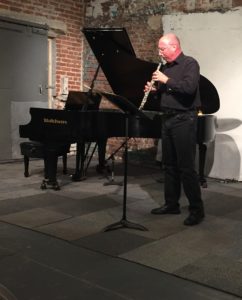 Tuesday, September 19, 2017 saw the first concert of the season at Monk Space, and for this occasion Luciano Berio’s challenging Sequenza series of virtuoso pieces were performed by the top musicians in Los Angeles. The event was also a fund-raiser to support new music at Monk Space with the musicians generously donating their time and talents for this extraordinary concert. A full crowd wedged itself into the cozy spaces of the Koreatown venue to hear, as the poet Edoardo Sanguineti wrote “…the sequence of sequences, which is the music of musics according to Luciano.”
Tuesday, September 19, 2017 saw the first concert of the season at Monk Space, and for this occasion Luciano Berio’s challenging Sequenza series of virtuoso pieces were performed by the top musicians in Los Angeles. The event was also a fund-raiser to support new music at Monk Space with the musicians generously donating their time and talents for this extraordinary concert. A full crowd wedged itself into the cozy spaces of the Koreatown venue to hear, as the poet Edoardo Sanguineti wrote “…the sequence of sequences, which is the music of musics according to Luciano.”